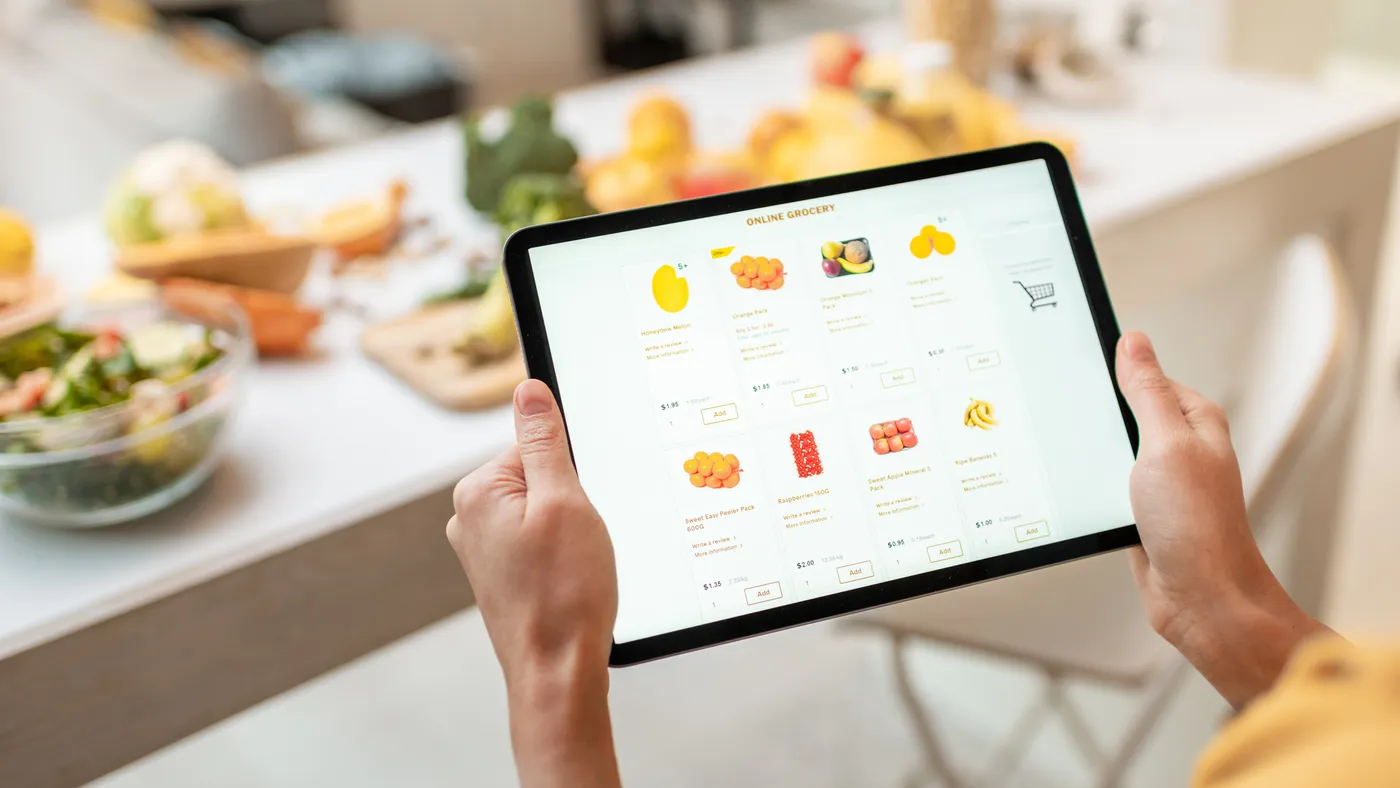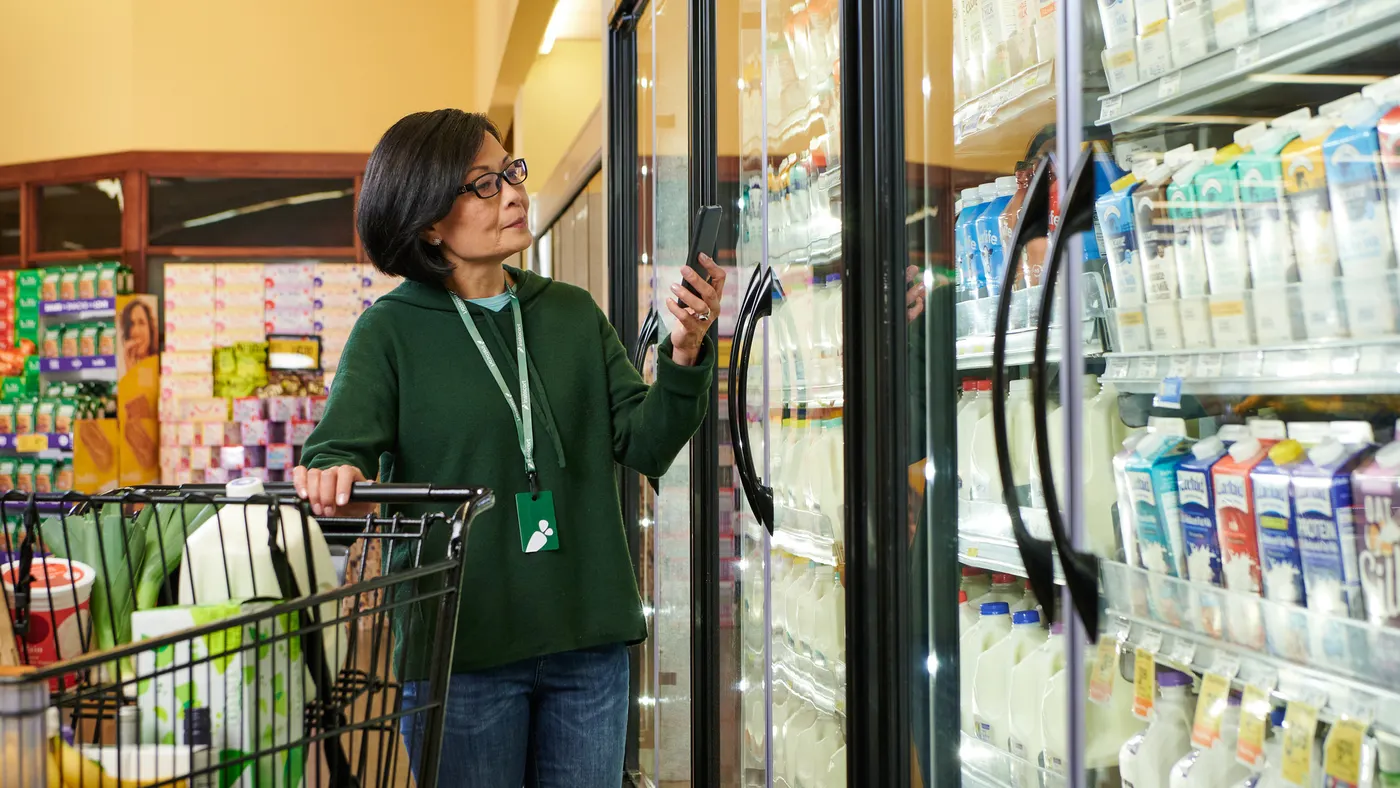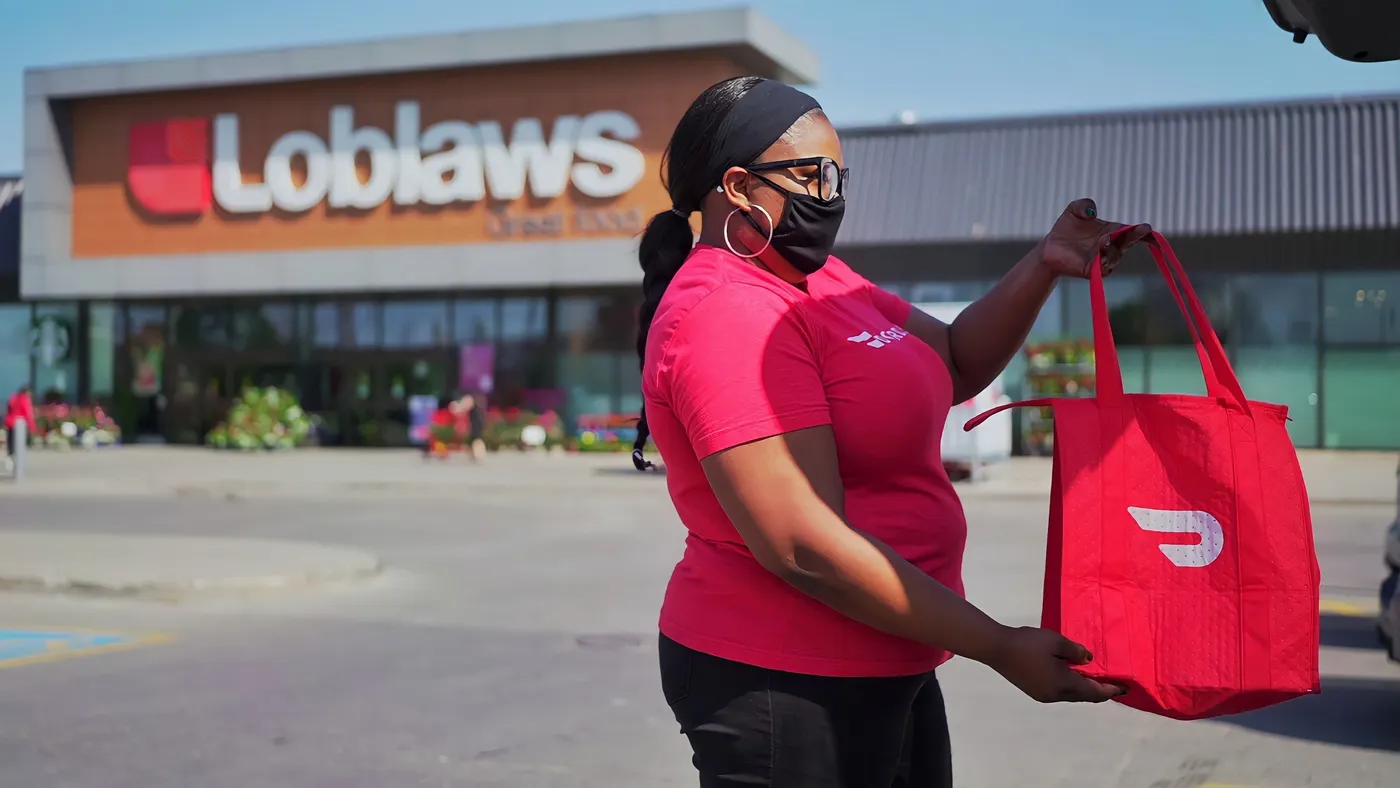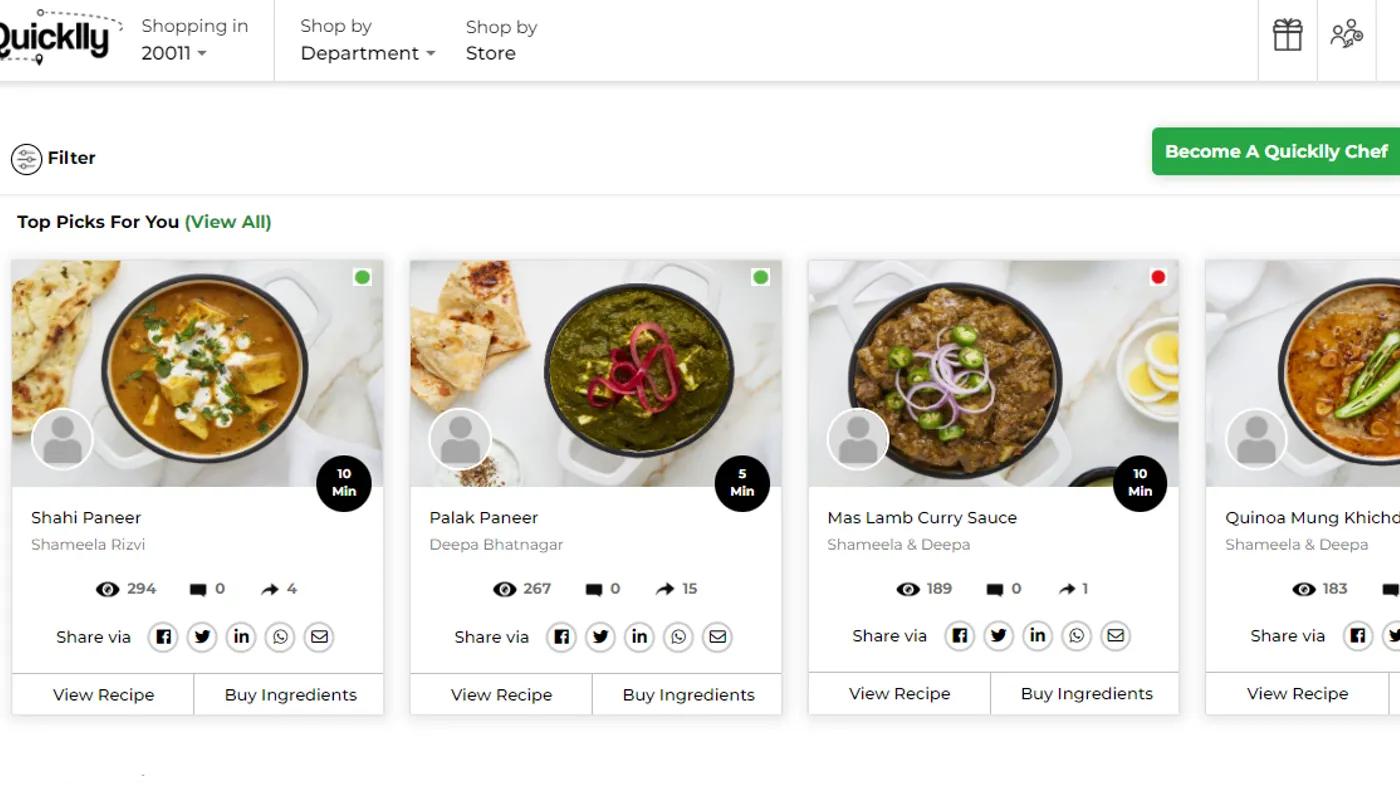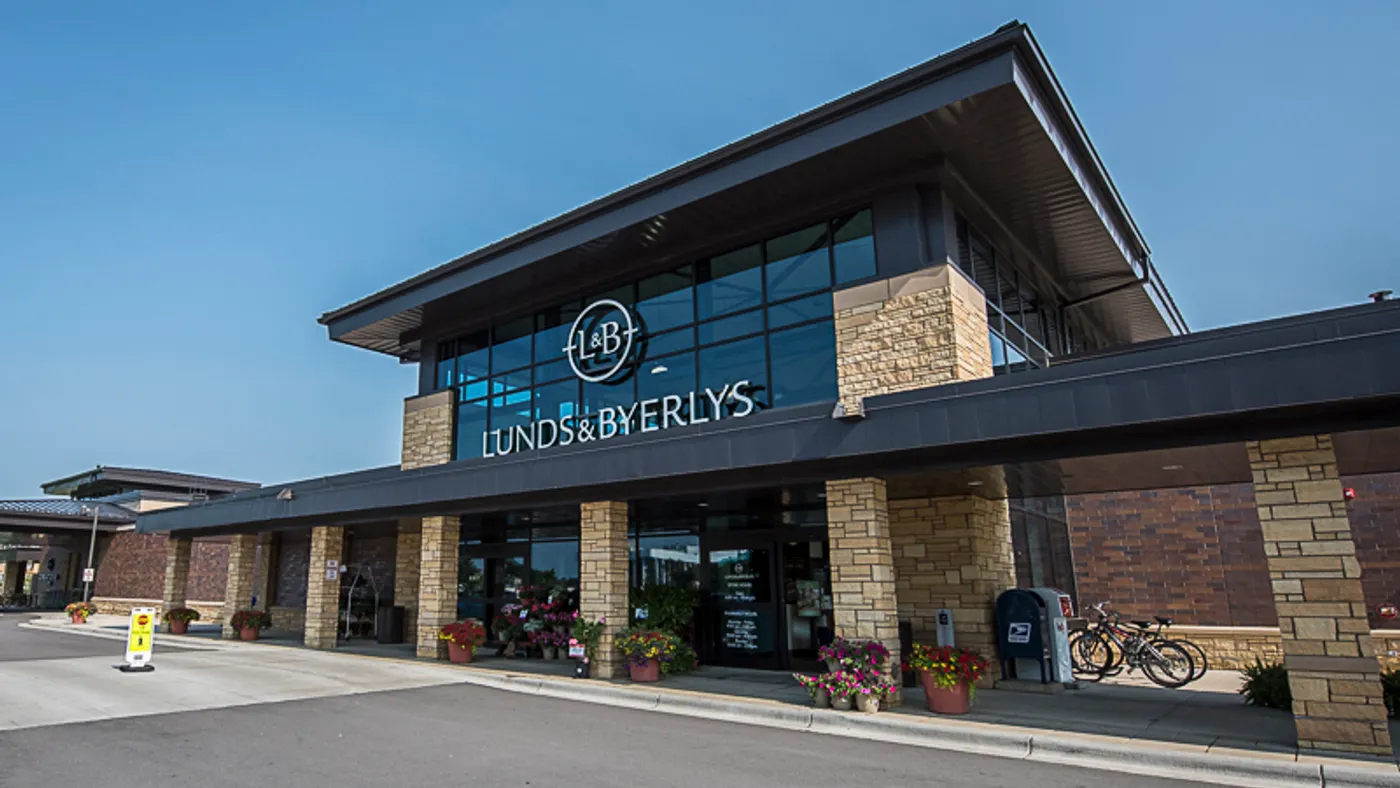
As self-checkout expands in grocery, here are 4 ways the technology is leveling up
Over the years, grocers have had an on-again, off-again relationship with self-checkout.
Right now, use of the payment terminals is firmly on the upswing as the pandemic-driven push for shopping options with less contact has cemented self-checkout as a way to cut back long lines, ease shopper anxieties around COVID-19 and untether store associates from the front end.
A number of grocers, including ShopRite stores in Delaware, West Coast chain Good Food Holdings and Hy-Vee, have expanded self-checkout since the pandemic started. Retailers like Kroger and Walmart have gone so far as to pilot self-checkout-only stores.
Self-checkout fits into the larger move by retailers to offer more self-service options, from salad bars to ordering kiosks at the deli, and free up or replace workers for tasks robots can handle. Research and Markets, a global market research firm, early this year said it estimates the self-checkout system market in the U.S., which accounts for 41% of the global market, reached $1.4 billion in 2021.

While self-checkout has come a long way from “the service robot” of the 1990s, it still poses pain points that can deter customers. A report by digital signage technology firm Raydiant last spring found 67% of surveyed consumers said they've experienced a self-checkout “fail.”
As self-checkout gains ground in grocery stores, technology companies are developing solutions to make them more attractive options for both shoppers and retailers. Here are just a few.
Resolving the “skip scan”
Retailers lose more than $60 billion in sales annually due to shrink, according to the National Retail Federation (NRF), and self-checkout can contribute to this problem by making it more tempting and easier for customers to skip scanning items.
To reduce “skip scans,” retailers have turned to loss prevention solutions to help catch potential shoplifters at self-checkout.
In 2020, Kroger signed on with Irish artificial intelligence firm Everseen, which uses computer vision cameras to detect if a shopper didn’t scan an item. When a shopper “skip scans,” a video pops up showing a top-down recording of the shopper trying to scan the item — or not — and asks if the person wants to try again or not. After the second failed scan, the technology discreetly alerts an associate to intervene.
“When somebody sees themselves on a video, it’s irrefutable. That’s exactly what happened. We don’t have to argue with it and people self-correct,” Alex Siskos, Everseen’s vice president of strategy and growth initiatives, said during a joint interview with Kroger at NRF’s conference in January.
Eighty-percent of the time, customers will self-correct after watching the video playback and no associate intervention is required, Tom Arigi, Kroger’s director of asset protection, said in the interview, which was hosted by OmniTalk.
“The overwhelming majority of the time, this is somebody that is not intentionally trying to get away with product,” Arigi said.
Since using Everseen, Kroger has seen increases in sales, inventory and accuracy, along with shrink reduction, Arigi said. The partnership has scaled up to more than 1,700 of Kroger’s more than 2,700 stores as of January.
Is that an orange or a tangerine?
Self-checkout can be a pain point for shoppers buying produce. More than three in 10 shoppers steer clear of fresh produce when using self-checkout, the Food Industry Association noted in a recent report.
Instead of having to remember the four-digit item code or search through the menu of products to find it, companies like Extenda Retail, KanduAI and Toshiba are looking to make the process simpler and faster with produce recognition solutions. Arigi of Kroger said during NRF that produce recognition software is of keen interest to the grocery chain as it looks to further innovate in self-checkout.

KanduAI, a technology company started in 2018 and headquartered in Tel Aviv, Israel, uses deep learning and artificial intelligence to recognize fruits and vegetables and provide a short list of possibilities to consumers. Shoppers can select if the item is organic or not.
Ninety-two percent of the time, KanduAI’s solution shows the correct item among the listed choices, while the other 8% of the time, which would prompt users to search via the checkout interface, is mostly due to having trouble recognizing an item that’s bagged, said Ariel Shemesh, founder of KanduAI.
It’s not foolproof: Just as humans can mix up yams and sweet potatoes, the technology can get fooled into thinking a dark avocado is an eggplant or that an orange is a tangerine, Shemesh said.
Still, KanduAI claims it shaves off time for shoppers at checkout stations and helps prevent mistakes.
“From a retailer perspective, the important part is that there are less mistakes,” Shemesh said. “Without our system, there [are] approximately 18% errors, and with our system, this is reduced to less than 4%, so it's pretty significant.”
KanduAI’s technology is already deployed in stores in France and Israel and has just started tests with three “major” supermarkets in North America, including two in the U.S. and one in Canada, Shemesh said.
Solving an age-old problem
Traditional self-checkout technology typically falls short when shoppers want to buy age-restricted items like alcohol, tobacco or certain prescription medications. Those items generally require a human worker to intervene to check the customer's ID and validate the purchase — introducing bottlenecks that can slow down lines, frustrate time-pressed shoppers and reduce the labor-saving benefits automation offers.
Seeking to overcome this challenge, startups that specialize in computer-based image recognition have been exploring ways to automate the process of confirming a person's age and clear purchases.

One of those companies, Austria-based Anyline, is testing mobile ID-verification technology it developed for police officers as a way to speed shoppers through checkout lines with retailers in the United States, South America Europe, said Lukas Kinigadner, the company's co-founder and CEO. Kinigadner would not say which retailers it is working with, but said the company could be ready to provide details about the tests later in 2022.
The technology, which compares an individual's face with a verified image associated with the person's age, has also been applied by banks looking to enable people to open accounts without showing up at a branch in person, Kinigadner said.
In an email, Kinigadner described two ways in which grocers can incorporate automated age-verification technology into their checkout procedures. In one implementation, shoppers add their driver's license or other photo ID to a retailer's shopping app, then scan their face at the point of purchase to permit facial recognition software to match the images and authorize transactions.
Retailers can also use camera-equipped security gates to ensure people permitted to enter a designated area of a store meet minimum age requirements, Kinigader said.
Kingadner said Anyline's technology is more accurate than humans at confirming a person's identity.
"If a person checks the ID and the person's appearance, the failure rate for humans is stunningly high," Kinigadner said. By contrast, with AI or machine learning, it's "very seldom that we generate false positives."
In January, U.K. grocery chain Asda said it has started working with Yoti, a London-based digital identity company, to test technology that lets shoppers buy alcohol at self-checkout stations without showing their ID to a store employee.
The system, installed at Asda stores in Pudsey and Stevenage, England, gives customers the option to look at a camera that can gauge their age when purchasing an age-restricted item to confirm they are old enough to buy the product. If a person appears to be younger than 25, the system offers the shopper the option to use an app to prove they meet the age criteria.
Asda said the system preserves people's privacy, but noted that shoppers who don't want to use it can work with a store worker to complete purchases that require age verification.
Self-checkout without bar codes
While conventional self-checkout systems typically use bar code scanners to read UPC codes on products, computer vision — the centerpiece of frictionless shopping solutions developed by Amazon and several other companies — has also emerged as a way to automate the checkout process for retailers.
Computer vision-based self-checkout systems are particularly appropriate for settings like convenience stores, sports venues and office cafeterias, where customers generally buy only a few items and are likely to be in a hurry, said Jack Hogan, vice president of strategic partnerships for Mashgin, which makes self-checkout units that sit on a countertop.
Mashgin's system uses cameras mounted inside the unit to identify several items at once, eliminating the need for customers to scan each product separately. The company's equipment can process transactions three to four times as quickly as traditional self-checkout systems, according to Hogan.
Rival firm Caper AI makes a similar checkout unit known as the Caper Counter, which uses cameras and a weight sensor to detect products. The device can handle complete transactions in 8 seconds, according to the company, which was acquired by Instacart last fall and also makes smart grocery carts that detect products as shoppers add them.

Caper and Mashgin both point to the fact that their units are simple to deploy as a selling point. Caper notes on its website that the Caper Counter can be up and running in an hour and requires only electricity and a network connection to function. Meanwhile, Mashgin was able to deploy its units to about 100 retail locations in less than a week, Hogan said.
Mashgin has also recently reduced the amount of time it takes to download product data to newly installed units so they can recognize products without the need to connect to a central database, Hogan added. That process, essential to deploying Mashgin's systems, used to take 12 hours, but can now be completed in less than 30 minutes, he said.
In addition, Mashgin realized that shoppers at the convenience-focused retailers that use its equipment often do not have access to electronic payment methods, so it added the ability for people to pay with cash, Hogan said.

